Upgrades for your mountain bike aren’t always about 1×12 groupsets and carbon wheels. Sure, throwing hundreds and even thousands of pounds at those sorts of things can result in some big changes in your ride, but thankfully there are plenty of other ways to improve performance that don’t require you to shell out quite so much.
Here are five little upgrades that I’ve been using on my test bikes over the past year, all of which cost less than 20 quid.
Dee-Dar Peaty’s Push-On’s
- Price: £4.99 (pair)
- From: Uberbike Components
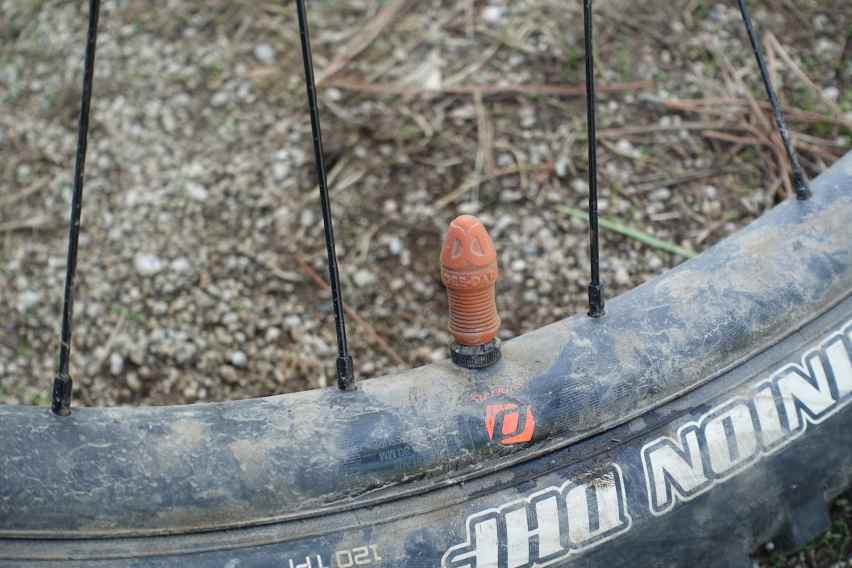
When we first got wind of Steve Peat’s new penis-shaped valve caps, everyone in the office genuinely thought it was a joke. Indeed when Peaty proudly showed me a prototype back at the Birmingham Cycle Show two years ago, all I could do was purse my lips and give him the old ‘smile & nod’ while going ever so slightly red in the face.
Yes, these are silicone valve caps that look like little dicks. Unfortunately there are no flesh-coloured options, but you can get black, green, red, yellow, blue and orange. They come as a pair in a neat little tub that you can reuse for storing chain links and spare brake pads in your riding pack.
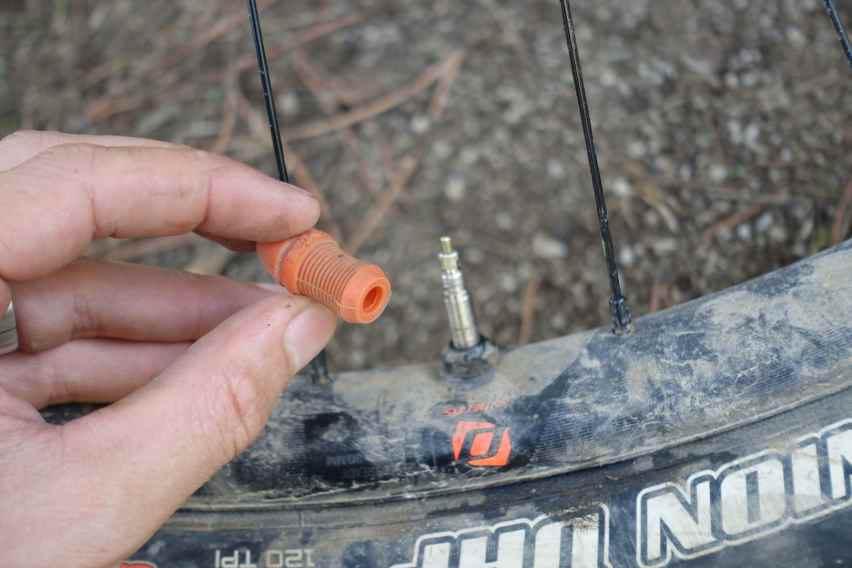
Aside from adding a splash of colour to your bike (don’t pretend like you don’t care), Push On’s offer your tyre valves a little extra protection, while being super easy to whip off when checking tyre pressure – something I engage in regularly. No, they’re not essential. But have you ever had a standard plastic valve cap unthread a valve core with it when you’ve gone to pump up your tyres? I have. It’s only happened a couple of times (usually when there’s some residue sealant or a slightly bent valve that causes the cap to stick), but that was enough to make me appreciate the simplicity and functionality of these Push On’s. I also really enjoy the reaction of new riders when they burst into laughter when they realise I have rubber penises on my bike.
Elvedes Extra Flexible Gear Cables
- Price: Approximately £6.50 per cable
- From: Elvedes
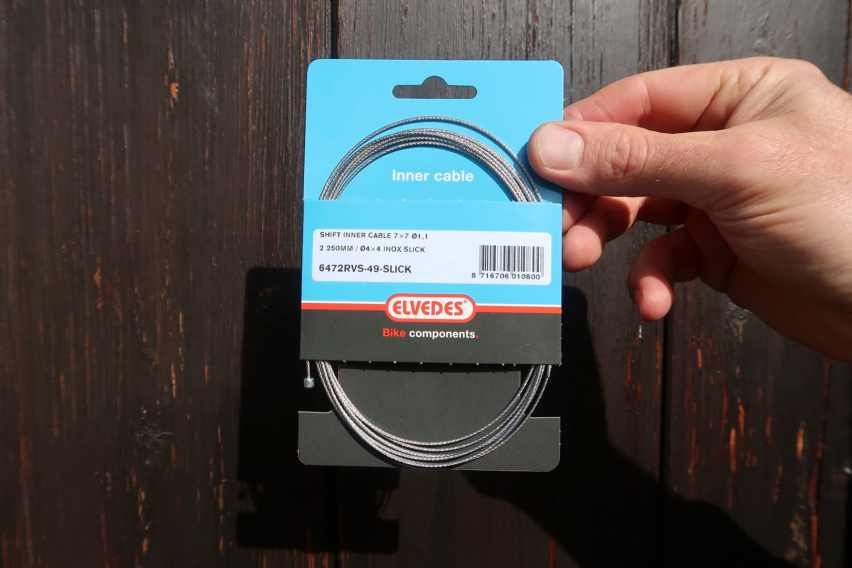
Yes, I’m here to talk about cables. Yawn.
Like it or not though, that boring cable is the vital link between your clever shifter and even cleverer derailleur. Or between your handlebar remote and dropper post. The quality of that cable plays a significant role in how well your gears and dropper post behave, and if there’s unnecessary friction present, then it doesn’t matter how good the components attached to that cable are.
Elvedes is a brand I’d never heard of up until a couple of months ago, but it turns out the Dutch brand’s range of workshop components is a hidden secret of bike mechanics all over.

The sample gear cables we were sent are Elvedes’ special ‘Extra Flexible & Extra Smooth’ option, which feature a smooth external finish and more stainless steel strands than a traditional cable (49 vs 19). To make that possible, the individual strands are much finer and provide significantly greater flexibility. For bikes with internal cable routing that feature awkwardly tight bends, this flexibility can make a notable difference to the shift quality.
I’ve used these cables on numerous bikes, including an Orange Stage 5 and Stage 4 – bikes that I’ve found to be a bit sluggish when it comes to rear derailleur feel. I fitted the Elvedes gear cable in the stock housing, and there was an instant improvement in the shifting action. I’ve also used this cable with a Fox Transfer dropper post, and the result was the same.
Fibrax Sintered Disc Brake Pads
- Price: £14.99 (per end)
- From: Fibrax

A similarly unseen and unsexy component, brake pads are to brakes what spokes are to wheels – they’re often overlooked, but you’re not going to enjoy riding a whole lot without them. They’re worth your attention though, because fresh, high quality brake pads can improve braking feel even on the most budget stoppers. In fact, they arguably have a bigger impact on cheap brakes, given that they tend to come with even cheaper brake pads to begin with.
Additionally, I’ve noticed a significant number of test bikes arriving at Singletrack Towers with standard organic/resin disc brake pads. That’s all fine and dandy if you live in a dry and dusty part of the world, where those organic brake pads provide nice and quiet stopping performance, but we live in the UK. And things are…a tad moist here. Particularly in our wet and gritty Calder Valley, where ground-down ‘Pennine Paste’ can shred through organic/resin brake pads in literally a single ride.
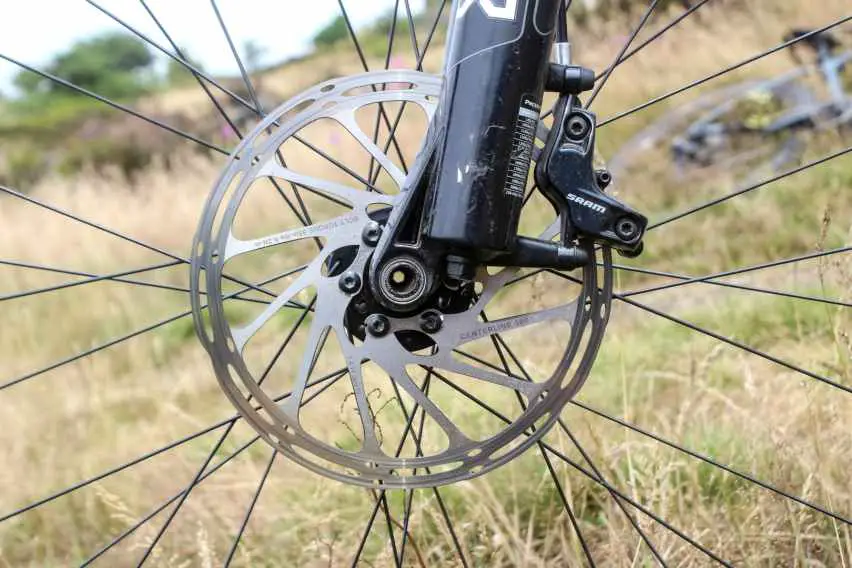
Whenever a new test bike turns up at the office, one of the first changes I make is switching to a sintered metallic brake pad. There are loads of great options out there, but lately I’ve been using Fibrax brake pads, since they have a huge catalogue of available styles and shapes, and they’re manufactured in Wrexham in Wales, making them the only pads I’m aware of that are made in the UK.
Despite offering significantly better durability in wet conditions, they also reduce fade on extended descents, where your brakes get nice and hot. No, they aren’t as quiet as resin pads (rotor dependent), and they won’t have as much initial grab at more gentle riding speeds, but their wet weather performance makes them a useful upgrade for any UK mountain biker.
Zine Sports Grip Tape
- Price: €12.90 (about £11.60)
- From: Zine Sports
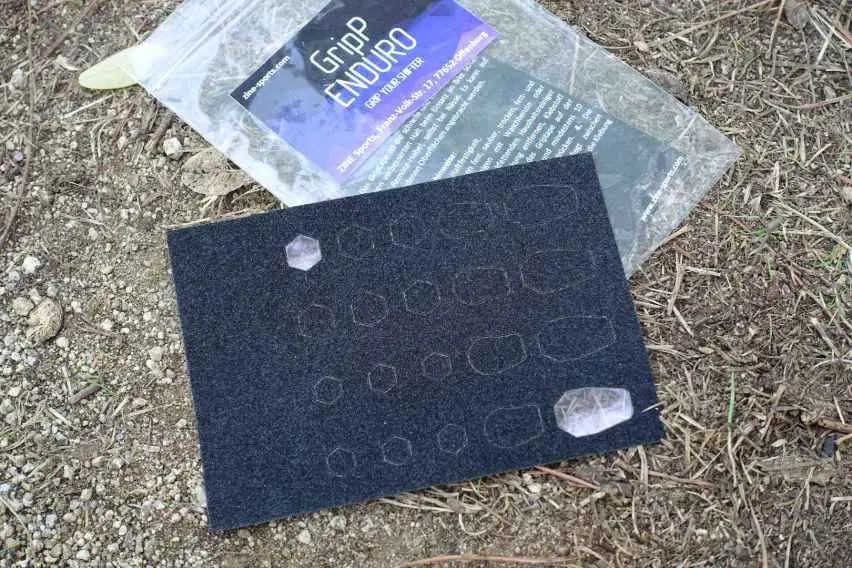
On the note of wet weather performance, this Grip Tape stuff from Zine Sports has been ace, and ever since I first tried it, I’ve been religiously fitting it to my test bikes for the past six months.
Designed to add traction between your gloves and the shift paddles and/or dropper post lever, Grip Tape isn’t dissimilar to what you’d find on a skateboard deck. The main difference between the two is that Grip Tape is quite a bit thinner – about 30% according to Zine. The small German company also states that its Grip Tape doesn’t contain any sharp particles made from silicon carbide or aluminium oxide, so while it does provide a high friction surface, it’s less likely to tear up your gloves.
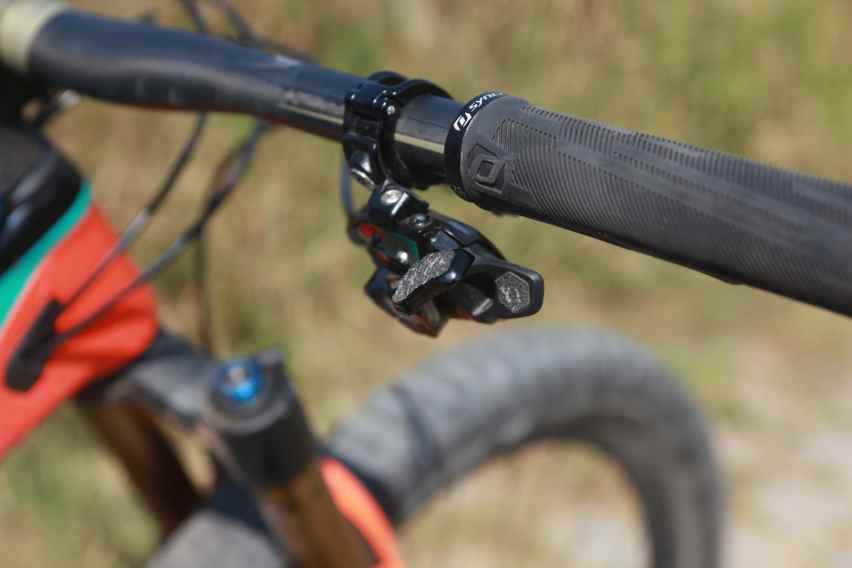
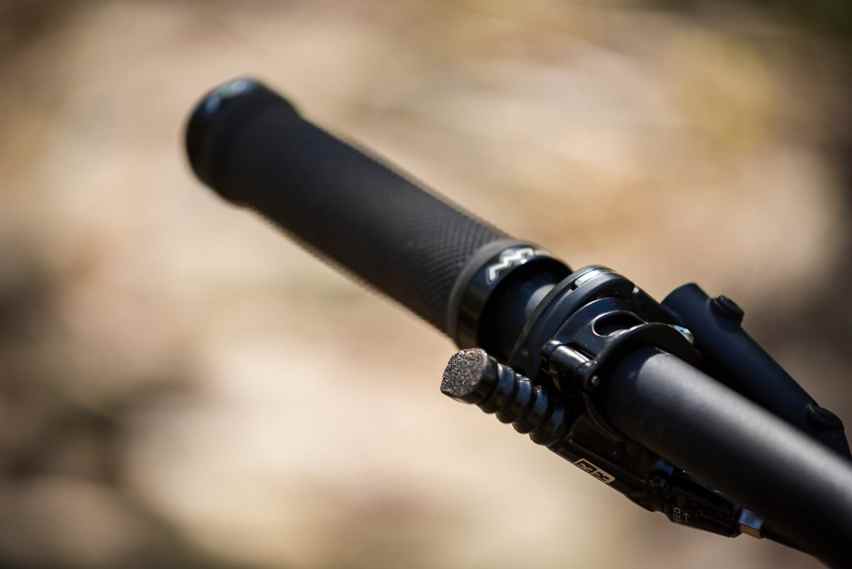
Zine offers the Grip Tape in two options: a thinner medium-grip version labelled ‘XC/Marathon’, and a high grip ‘Enduro’ version. I’ve been using the latter, which is still less than 1mm thick so it doesn’t add a lot of stack height. You get a 105x150mm sheet that includes multiple laser-cut stickers that are ready to be pulled off and stuck onto your shifter paddles, dropper post lever, and lockout levers, but there’s a large uncut section that you can create your own custom shapes with. Just make sure you clean the surface with isopropyl alcohol first to remove any residual grease from your dirty fingers before sticking them on.
DMR DeathGrips
- Price: £17 (pair)
- From: Upgrade Bikes

For a certain portion of you reading this, I’m basically going to be preaching to the choir here. That’s because the DeathGrips have been around for a good while now, and in that time they’ve earned a legion of loyal fans who will forever praise DMR’s winning waffle/knurl/mushroom tread pattern combo whenever they’re given the chance. The praise isn’t unjustified though – these are properly good.
Just like gear cables, bottom brackets and cassettes, grips tend to be a component that brand managers will sacrifice in the name of putting a fancy, attention-grabbing rear derailleur on their production bikes – because that’s what will sell the bike on the shop floor. Grips are an important contact point with your bike though, and for a relatively small outlay, you can replace those cheap, crappy grips with some much more satisfying love handles.
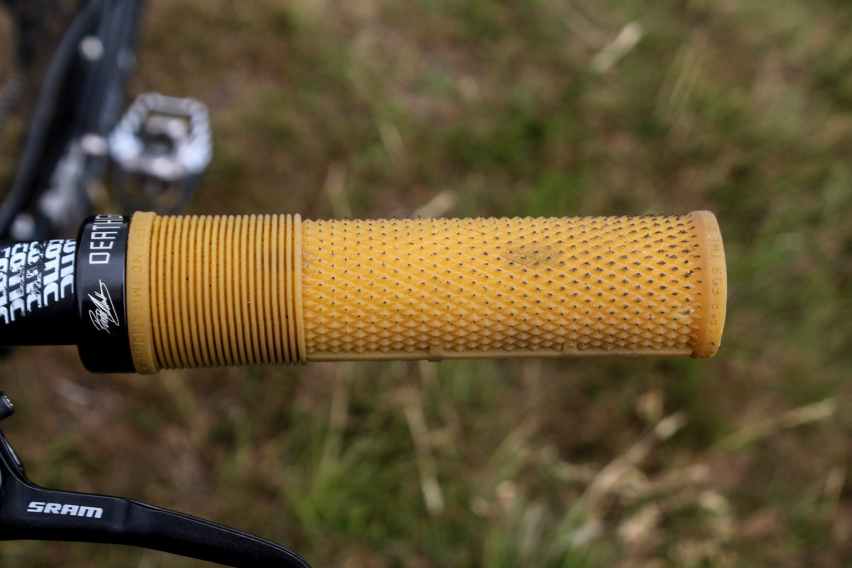
For me, the DMR DeathGrips are high up on the list of my favourites. They’re available in thick (31.3mm) and thin (29.8mm) diameters, flange or flange-less, and soft or hard compounds. There’s also an even softer compound ‘Race Edition’ available for a couple of quid more. I’ve found my thumbs prefer the flange-less variety for ease of operating the shifter and dropper post, and my Small/Medium sized hands get on particularly well with the thin diameter and soft compound.
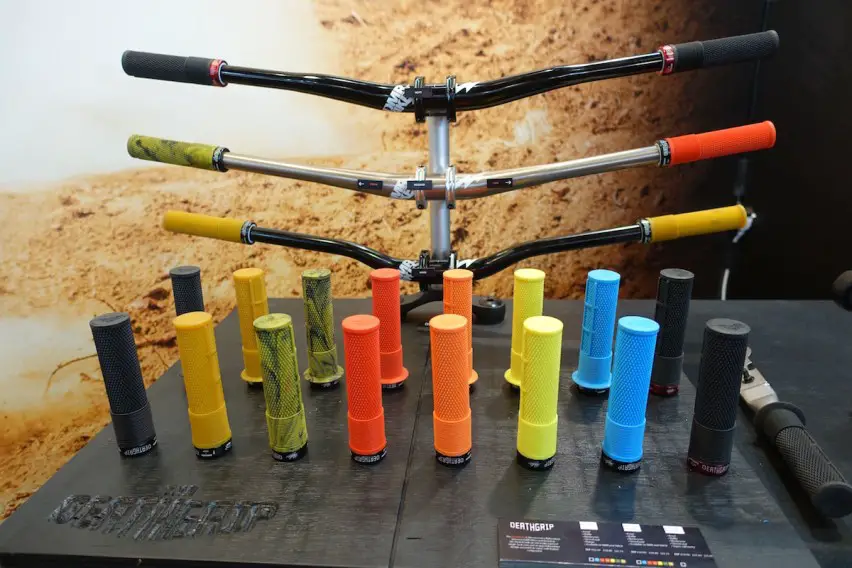
The shape is relatively simple – these are no Ergon or SQlab grips. But I like the tactile and edgy feel of the tread pattern, and how grippy these are in all conditions, especially when it’s wet. The mushroom section also helps to provide a physical reference point of where your hands are placed on the bars, so they’re easy to self locate. With a single inboard locking clamp, you can run your hands out nice and wide, and the mushroom inner section provides a flexible and comfortable perch for your thumb when you’re…err…death-gripping.
Right, so there’s my list of five upgrades. But what about you? Are there any little upgrades you’d recommend to your fellow mountain bikers?
Let us know in the comments section below!
We are really up against it
Advertising revenues are falling and costs are rising fast, which all adds up to a problem for us. Singletrack doesn’t have external shareholders or an umbrella company to prop us up. We don’t have deep pockets and what we earn one month gets spent the next on keeping the team and the bills paid. It’s harder than ever to be a unique and independent media brand – we should know, we’ve been doing this for almost a quarter of a century. That’s why we need you.
If you enjoy what we do then a donation would really help us reach our goal of sustainability. From building the community in the forum to publishing daily news content online and in print – we can’t do this without you. Subscribers are who we do this for so if you aren’t signed up then we’d love you to do that first. But if you have the means a donation will always help and will always be appreciated more than you will know.
Donate £50 or more and we’ll send you a t-shirt to say thanks.
Make a one-time donation
Make a monthly donation
Make a yearly donation
Choose an amount
Or enter a custom amount
Your contribution is appreciated.
Your contribution is appreciated.
Your contribution is appreciated.
DonateDonate monthlyDonate yearlyComments (11)
Comments Closed

Haha… £11.60 for a small patch of grip tape.
You can get the same ‘Weather proof Endurognar’ griptape on ebay for a fraction of the price. You just need to do the cutting & shapping yourself.
Fools and their money…
“But have you ever had a standard plastic valve cap unthread a valve core with it when you’ve gone to pump up your tyres?”
Nope. Schrader valves don’t do that 🙂
Unless the concept of scissor is confusing for you, you can’t consider that grip tape cheap. A couple of meters can be had on fleabay for couple of quid.
Has to be a small fork mudguard – £8 – £15. Brilliant thing to be left on year around.
Decent cables, quite often.
Fork-mounted mudguard – never comes off.
KS Post Paste on all stanchions, quite often.
Spare DMR pins to keep the Vaults spiky.
I’ve got some fresh Death-Grips waiting to be fitted… 🙂
hey Will, is this the correct cable you were on about? seems cheap…
https://www.amazon.co.uk/Elvedes-Stainless-Universal-Shimano-Suntour/dp/B018R021N8/ref=sr_1_1?s=cycling&ie=UTF8&qid=1540366797&sr=1-1&keywords=Elvedes+6472rvs-49-slick
also, i scoffed at peatys little dicks at first too, but i found one on the trail once and its been a resident on my rear wheel ever since!! (front has a stem core removable jobby) its great for exactly the reasons you mention. not sure id spend real money on em tho…
re the sintered pads. I’d always thought they generated *more* heat so were worse for steep/long euro descents?
Additions to the list?
Mudhugger rear guard. Keep clean in filthy conditions and get a longer life from your shock, post, saddle, shorts, bag. The first rear guard for a mountain bike that actually works and stays in place. Bargain at about £20
@pooceq – Not confusing, I’m just not allowed to use them anymore without adult supervision 🙂 That’s a good shout though, and I’ve seen front mudguards made out of old plastic milk bottles, so there’s another way to save yourself a few quid if you’re handy on the arts ‘n’ crafts.
@matt_outandabout – Agreed! Normally the first thing our test bikes receive is a tie-on front mudguard. They are invaluable.
@BigDummy – Good suggestions! I like the stanchion paste and the pins suggestion. Small and relatively cheap things that can make noticeable improvements.
@mahalo – Yes, those are the cables! Not a brand that I’d really heard of before, but those 7×7 Extra Smooth cables work exceptionally well.
@simons_nicolai-uk – Yes, sintered pads can generate more heat. However, the key with sintered pads is that they are much better at withstanding that heat – so they’re a much better choice for steeper and more aggressive riding, where brake fade becomes a problem.
Hope that helps explain!
ST Wil.
“however, the key with sintered pads is that they are much better at withstanding that heat – so they’re a much better choice for steeper and more aggressive riding, where brake fade”
learn something new. I was suffering on my hopes the other week out with Basque Mtb when I hadn’t before. I’ve always run standard Hope but seals are old in one brake, discs are worn below min thickness and I was had some Uber pads in there.
@simons_nicolai-uk – Sounds like those brakes could use some lovin!
@simons_nicolai-uk – Sounds like they need some Fibrax lovin’
As Wil said, Sintered can handle the heat better than a semi-metallic / organic pad.
Basically, differences are…
Organic – (OEM pads) made of fibres and glue – great in the car park, instant bite, lever feels mint, as soon as they get hot, the glue melts, pad hyper-wears.
Semi-Metallic – (what we make as our “standard” pad) is an Organic base, with flecks of ceramic, copper and Kevlar in them, this allows them to transfer the heat out of the calliper better and therefore stay in a useable temperature range for longer, as the extra fillers are harder, you also get pads that last longer due to both of material and the fact that they run more efficiently.
Finned – (our finned) use a semi-metallic pad on an aluminium backing plate, I developed them to work like a CPU heatsink so they’re 3.5 times more thermally efficient, therefore cooler under harder braking (brill for uplifts or long fast descents)
Sintered – Full metal [jacket] brake pad, mostly made of copper and some other cool bits, they heat up super quick but also drop temps quickly, the downside is that they’re very hard when you compare them to organic so will wear out your rotors, make more noise (more friction) and only work well when significantly hotter than a “normal” pad.
So, if you’re on draggy techy bum over the back stuff and they’re going to suffer constant heat cycles without a long rest between each section, I’d run sintered.
If there will be a long rest between each heat cycle like doing uplifts but you still want better feel at lower temperatures then finned.
If you’re doing Trail centres / Natural (UK) riding and want something that can handle a bit of a thrashing but won’t have massive heat cycles in quick succession then I’d go Semi-Metallic.
Then if you’re after old school long day XC rides without significant draggy bits, organic.
HTH?
Shout if you need anything!